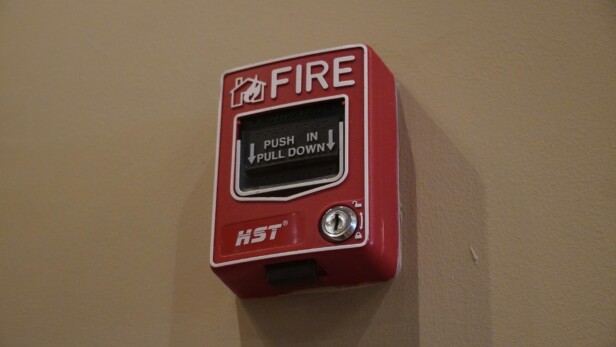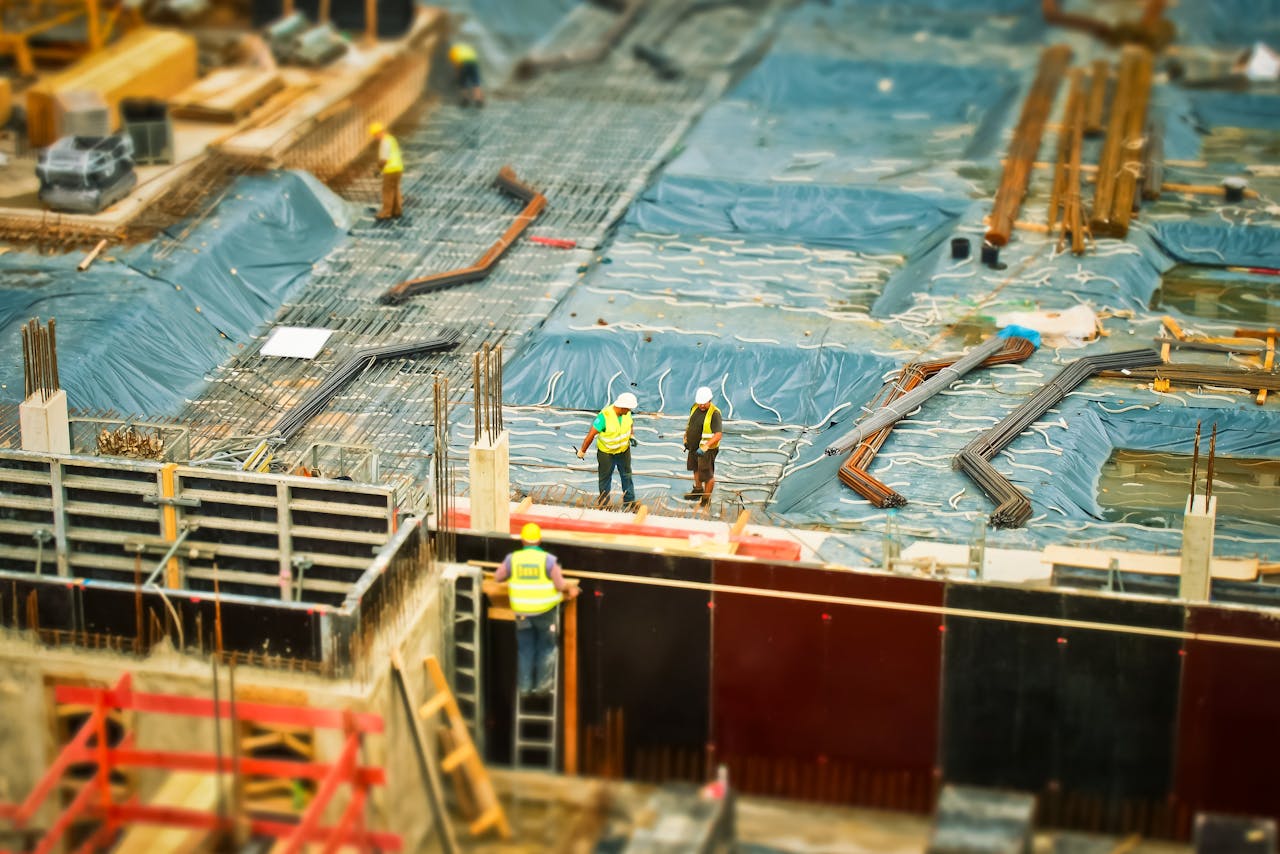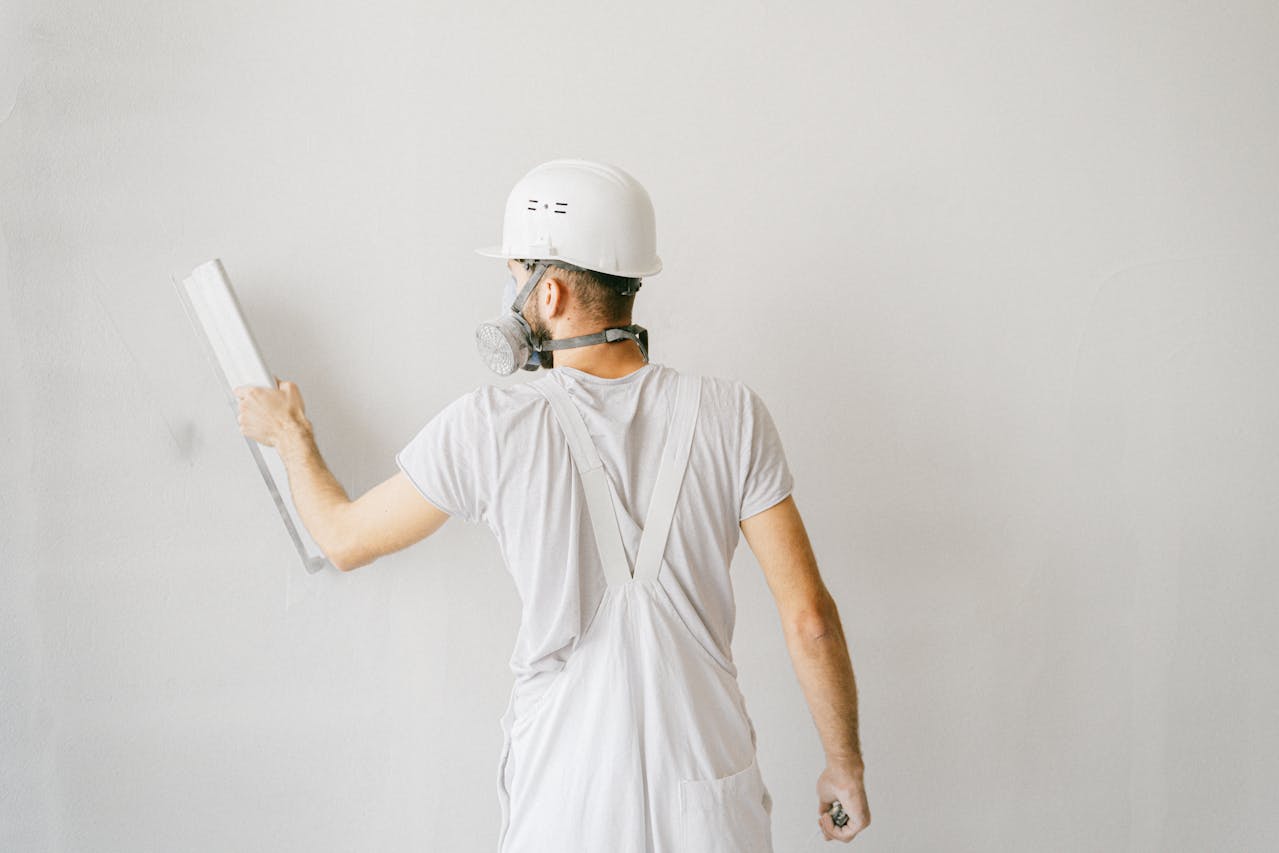Engine fires can ignite without warning in mechanic shops. Within seconds, a single spark near gasoline or oil can threaten lives, expensive equipment, and customer vehicles stored throughout the facility.
A mechanic shop fire suppression system in San Antonio uses fixed systems with cylinders, piping, nozzles, and a control box to protect people and assets from fast-moving fires. These systems provide automatic detection and rapid agent release when heat levels exceed safe thresholds. We install and service industrial fire suppression systems throughout San Antonio and South Texas, including specialized paint booth systems that handle the unique hazards of automotive finishing operations.
What Hazards In Mechanic Shops Drive System Design?

Mechanic shops present a complex mix of fire hazards that determine suppression system specifications. Each hazard category requires different suppression approaches to ensure effective protection.
Class A Fire Hazards From Ordinary Combustibles
Wood shelving, paper documentation, cloth rags, and plastic components create Class A fire risks throughout shop operations. These materials ignite easily and burn steadily once established. We encounter these combustibles in storage areas, office spaces, and around workstations where debris accumulates.
Class A fires respond well to water-based suppression or foam systems. However, the mixed hazard environment in most shops requires broader protection strategies that address multiple fire types simultaneously.
Class B Hazards From Flammable Liquids And Gases
Gasoline, motor oils, brake fluid, transmission fluid, and paint create significant Class B fire hazards. These flammable liquids spread rapidly and burn intensely when ignited. Propane tanks for heating equipment and acetylene for welding add compressed gas risks to the mix.
Paint booth operations concentrate these hazards in enclosed spaces where overspray and solvent vapors create explosive atmospheres. Dedicated suppression systems for paint booths often use dry chemical agents that interrupt the combustion process without conducting electricity.
Class C Electrical Equipment Fire Risks
Live electrical equipment throughout mechanic shops creates Class C fire hazards. Welding equipment, hydraulic lifts, diagnostic computers, battery chargers, and power tools all present energized electrical fire risks. Short circuits, overloaded outlets, and damaged wiring can ignite surrounding combustibles.
Class C fires require non-conductive suppression agents like carbon dioxide or dry chemical powders. Water-based systems become dangerous around energized equipment and can create electrocution hazards for personnel.
We coordinate electrical shut-offs with suppression system activation to reduce shock risks while maintaining effective fire suppression capabilities.
Class D Combustible Metal Hazards
Magnesium wheels, aluminum parts, and titanium components create Class D fire hazards when machined or exposed to high heat. Metal dust from grinding operations presents particular risks as fine particles ignite easily and burn at extremely high temperatures.
Class D fires require specialized dry powder agents designed for metal fires. Standard suppression agents can actually worsen combustible metal fires by providing oxygen or causing violent reactions.
Portable Fire Extinguisher Selection And Placement
Portable fire extinguishers must match the specific fire classes present in each shop area. Most portable units discharge their contents in eight seconds or less, making proper sizing and strategic placement critical for effective response.
Multi-class ABC extinguishers handle ordinary combustibles, flammable liquids, and electrical fires effectively. Class D extinguishers should be positioned near metal working areas. Kitchen areas require Class K extinguishers for cooking oil fires.
We calculate extinguisher coverage based on travel distance requirements and hazard severity. High-risk areas like paint booths need dedicated protection within immediate reach of operators.
How Do These Systems Detect And Activate During A Fire?
Fixed gas suppression systems operate through two primary methods: automatic detection and remote manual actuation. Each provides a reliable pathway to system activation when fire conditions develop in mechanic shops.
The automatic detection process centers on fusible links, which use precisely calibrated alloy ratings. These metal components sit directly in potential fire areas or exhaust airstreams. When ambient temperatures exceed the fusible link’s predetermined rating, the alloy melts and separates.
This separation triggers the entire release sequence. The fusible link acts as both detector and mechanical trigger. Once it fails, pressurized agent flows from storage cylinders through the piping network.
We coordinate gas line shut-off equipment with detection systems during installation. Some shops require mechanical shut-off valves that close automatically when the suppression system activates. Others use electrically operated valves that receive signals from the control box.
Remote manual actuation provides backup activation when automatic systems fail or when personnel spot fires before fusible links reach their rating temperature. Manual release stations mount near exit routes. Staff can pull these stations to immediately trigger agent discharge.
Agent discharges through fixed nozzle networks that we position based on shop layout and hazard locations. The piping system carries pressurized suppressant from cylinders to strategically placed discharge nozzles. Red piping typically marks suppression lines in local installations.
Control boxes serve as the system’s command center. They monitor fusible link circuits, manual stations, and auxiliary equipment. When activation occurs, control boxes can interface with building alarms, ventilation fans, and electrical shut-offs.
Many San Antonio installations include integration with fire alarm panels and HVAC systems. This coordination ensures fans stop during agent discharge and building occupants receive proper notification. The complete sequence from detection to full discharge typically takes seconds once triggered.
What Services Keep San Antonio Shop Systems Compliant And Ready?
We handle design, installation, inspections, and repair services entirely in-house for San Antonio mechanic shops. This integrated approach ensures consistent quality control across all fire protection disciplines while streamlining project coordination for shop owners.
Our inspection and preventative maintenance services cover suppression systems, fire sprinklers, fire alarms, backflow devices, emergency and exit lighting, plus portable extinguisher recharge and DOT hydrotesting. Regular maintenance prevents system failures when shops need protection most.
Design And Installation Services
We coordinate fire sprinkler system installation with other building trades using 3D CAD design to minimize conflicts during construction. Special hazard suppression for paint booths requires precise engineering to protect against flammable vapors and overspray.
Installation teams work directly with shop owners to minimize operational disruption. We schedule major work during planned downtime and coordinate with local inspectors to expedite approvals.
Ongoing Compliance Support
Preventative maintenance agreements keep systems ready through scheduled inspections and testing. We track compliance dates for backflow device testing, fire alarm verification, and sprinkler system checks to prevent lapses.
DOT hydrotesting validates portable extinguisher integrity under pressure. Our technicians recharge units after discharge and replace components that fail inspection standards.
Local Service Coverage
We support facilities throughout San Antonio and surrounding areas including Bexar, Comal, and Guadalupe counties. Our service territory extends to nearby cities like New Braunfels, Boerne, and Kerrville where mechanic shops need reliable fire protection support.
Licensed in the State of Texas, we maintain current certifications for all fire protection disciplines. This licensing ensures work meets state codes and passes municipal inspections across our service area.
What Supporting Equipment Should Shops Include Alongside Suppression?
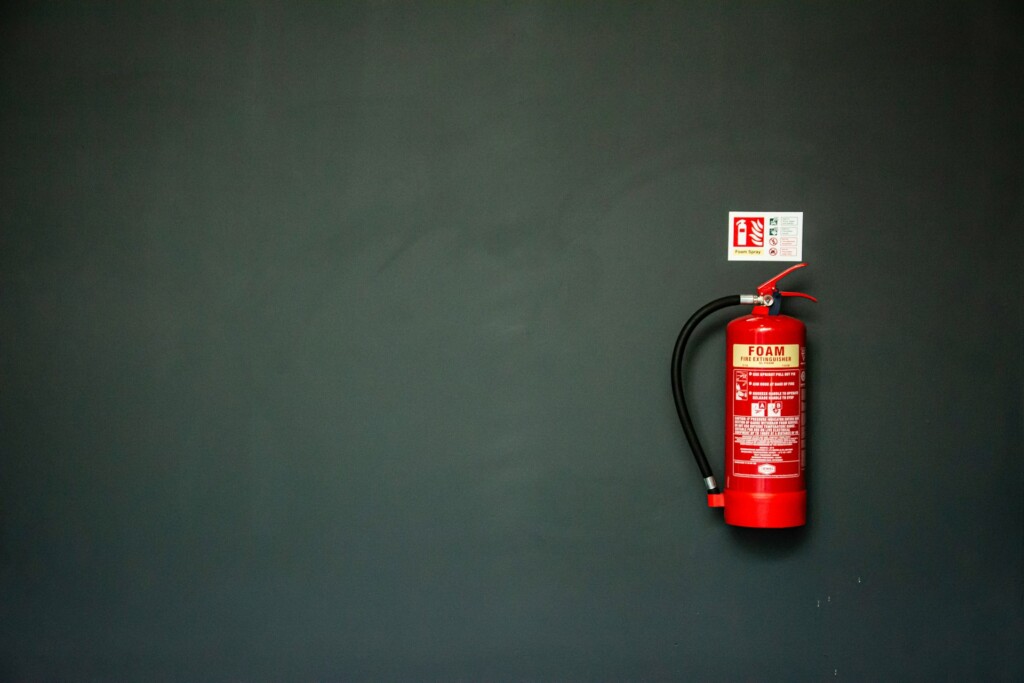
Fire suppression systems work best when paired with complementary fire protection equipment. Each component serves a specific purpose in comprehensive shop safety.
Fire Alarms For Early Detection And Notification
Fire alarms provide critical early warning before suppression systems activate. Smoke detectors catch smoldering fires that heat detectors might miss. Manual pull stations allow workers to trigger alarms immediately when they spot fire or smoke.
We connect fire alarm systems to suppression controls for coordinated response. When alarms detect fire conditions, they can automatically trigger suppression discharge and shut down equipment. This integration creates faster response times than relying on heat detection alone.
Fire Sprinkler Systems Where Applicable
Fire sprinklers complement suppression systems in general work areas. Wet pipe systems provide continuous water coverage for ordinary combustibles like wood, paper, and fabric materials. Dry pipe systems work better in unheated areas where freezing could damage water-filled pipes.
We avoid sprinklers in paint booths and electrical areas where water could worsen fires. Sprinklers handle widespread fires that exceed suppression system coverage areas. They also provide backup protection if suppression systems fail or discharge completely.
Portable Extinguishers For All Fire Classes
Shops need portable extinguishers sized for specific hazards in each area. Class A extinguishers handle ordinary combustibles in offices and storage areas. Class B models suppress flammable liquid fires from gasoline, oil, and solvents. Class C extinguishers work on energized electrical equipment without conducting electricity back to operators.
Class D extinguishers target combustible metals like magnesium found in some automotive parts. We label each extinguisher clearly and mount them within 75 feet of protected hazards. Proper placement ensures workers can reach extinguishers quickly during emergencies.
Emergency And Exit Lighting For Safe Egress
Emergency lighting guides occupants to exits when fires disrupt normal power. Battery-powered exit signs remain visible through smoke and power outages. Emergency lighting fixtures illuminate escape routes, stairwells, and exit doors.
We install emergency lighting along all egress paths and near fire equipment locations. Systems automatically activate during power failures and provide at least 90 minutes of operation. Proper lighting prevents injuries during evacuations and helps emergency responders navigate buildings.
Special Hazard Suppression For Industrial Processes
Paint booths require dedicated suppression systems designed for flammable liquid vapors. Clean agent systems protect sensitive electronics without leaving residue. Dry chemical systems work well for equipment areas with mixed fire hazards.
We select suppression agents based on specific process risks and protected assets. Industrial areas often need higher concentration levels and faster discharge rates than standard systems. Special hazard systems integrate with process controls to shut down operations safely before agent discharge.
Regular Inspection And Recharging
All fire protection equipment requires ongoing maintenance to stay effective. We inspect portable extinguishers monthly and recharge them after any use. Fire alarms need annual testing of all detectors, panels, and notification devices.
Emergency lighting systems require monthly function tests and annual battery replacement. Suppression systems need semi-annual inspections of agent levels, nozzles, and control equipment. Proper maintenance ensures all systems work together when emergencies occur.
Conclusion And Next Steps For San Antonio Mechanic Shops
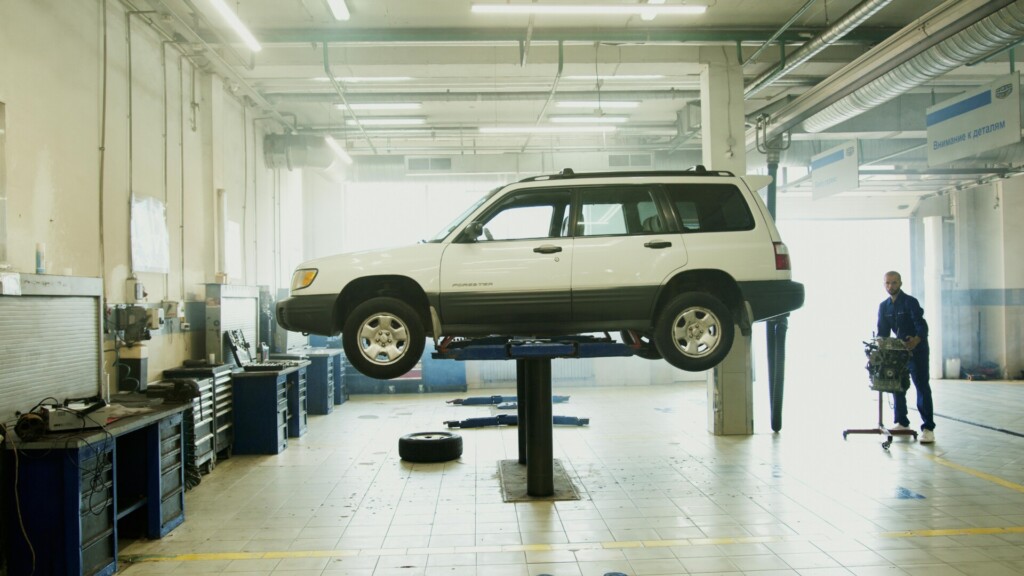
Fire suppression systems in mechanic shops require careful planning to address real hazards. Each San Antonio shop faces unique risks from flammable liquids, electrical equipment, and combustible materials that demand specific protection strategies.
We recommend automatic detection systems with fusible link actuation for reliable heat-based triggering. Plan for gas line shut-off capabilities to prevent fuel from feeding fires. Add fire alarms for early warning, emergency lighting for safe evacuation, and properly classified portable extinguishers positioned throughout work areas. Paint booth operations need special hazard suppression designed for industrial processes.
Regular inspections and preventative maintenance keep systems ready when needed most. Texas regulations require licensed contractors for installation and service work.
Contact EB3 Construction for mechanic shop fire suppression system design, installation, and maintenance support across the San Antonio area.

